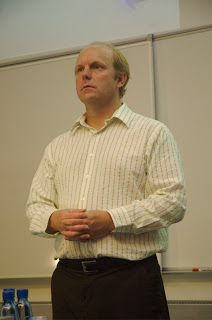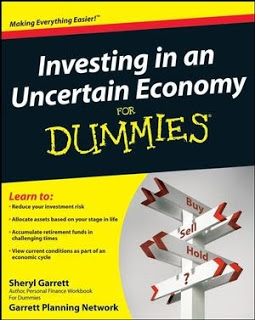 United Business Media is relaunching COMDEX as a virtual trade show.
United Business Media is relaunching COMDEX as a virtual trade show.
This is hysterically funny. Laugh-out-loud funny. Roll-on-the-floor funny. The benefits of attending COMDEX were talking to people, seeing and touching new products, talking to people, making deals with both exhibitors and other attendees, talking to people, discovering new companies, and talking to people.
While much of the business at COMDEX was “formal” on the show floor, just as much (or more) was casual and informal, in bars, restaurants, nightclubs, cab lines, black-jack tables, hotel lobbies, hallways, hospitality suites and so-on.
COMDEX is where business got done, because everyone you wanted to do business with was at COMDEX.
Sorry, but a virtual trade show, where you get to view simulated booths from the isolation of your cubicle, isn’t what huge industry get-togethers like COMDEX are all about.
(PS: Grand Hall of Masters??????)
Here’s the news — see the press release here.
Leading virtual event provider takes COMDEX back to its roots
UBM, the leading global provider of business media and marketing services, is relaunching COMDEX as a virtual event which will take place November 16-17, 2010.
At its peak COMDEX was the world’s most famous tradeshow, attracting more than 200,000 visitors and 2,300 IT industry exhibitors from around the world to Las Vegas before the show closed its doors in 2003. UBM acquired the COMDEX brand as part of its acquisition of MediaLive International Inc in 2006.
The virtual COMDEX event is being launched by UBM’s Everything Channel business, a leader in technology sales channel media and services. Everything Channel is going back to the original 1979 concept of an event designed exclusively for the technology sales channel called “Computer Dealer Exhibition”. Everything Channel’s virtual COMDEX will include:
* Grand Hall of Masters will showcase the event’s keynote speakers
* The Conference Hall will offer technical, product, channel and business conference tracks
* The Exhibit Hall will feature booths and pavilions from technology vendors
* Hospitality Suites for private meetings, briefings and cocktail parties
* The Media Room will host registered journalists and industry analysts
* CRN Test Center will offer live reviews and demos of leading-edge technology solutions
For more information on and to register for Everything Channel’s COMDEX event, go here: www.COMDEXvirtual.com.
Virtual events are specially created online digital environments in which participants interact with online content or with other online participants as they would at live, face to face events. In 2009 UBM ran a total of 38 virtual events of different types, including careers fairs, technical seminars, tradeshows, conferences and sales meetings. For more information on UBM’s virtual events in 2010 go here: http://www.ubmstudios.com/featured-events/upcoming-events/.
Everything Channel’s virtual COMDEX event will be built by UBM Studios, UBM’s creative and strategic marketing business which specialises in building next-generation virtual media business solutions which connect global audiences through a robust virtual event environment with an intuitive user interface and appealing visuals. To find out more about the capabilities of UBM Studios virtual events go here: http://www.ubmstudios.com/virtual-product-suite/.
Separately, UBM Studios has signed a strategic alliance agreement with InXpo, the largest virtual event technology provider, to deliver next generation virtual business solutions using the InXpo Virtual Events Platform. As its first global media licensee, UBM Studios will use the InXpo platform to support the delivery of UBM virtual events at scale and on a worldwide basis.
David Levin, CEO of UBM said:
“The original COMDEX died because it stopped serving its core customers. We are giving COMDEX a future by going back to its past. Our virtual COMDEX is focused on serving the IT channel, Value Added Resellers, ISVs and all those people and businesses who make up the IT distribution system. Virtual COMDEX works right alongside and complements the other products and services we provide for the Channel and for the wider technology industry.”
“We are a leader in the virtual event market – we ran 38 virtual events in 2009. Through our UBM Studios business this year we’ll run many more virtual tradeshows, recruitment events and in-house training sessions for industries as diverse as construction, shipping and healthcare.”
“We run virtual events in tandem with live, in person events like tradeshows: we think we have a great opportunity to take advantage of the complementarity between online and offline events. Virtual events are emerging as a great, cost effective way of bringing customers together to engage and interact with branded business content and as well as a means of building professional business community interaction. These capabilities are key to delivering the measurable ROI that our customers are looking for.”
Z Trek Copyright (c) Alan Zeichick
 What can you do with an old dead computer? A family member asked me how to dispose of his ancient no-longer-functioning Dell desktop PC. The good news is that it’s easy, and usually free, to recycle unwanted electronics, whether it’s a computer or cell phone, television or batteries. Here’s an generalized version of what I told him:
What can you do with an old dead computer? A family member asked me how to dispose of his ancient no-longer-functioning Dell desktop PC. The good news is that it’s easy, and usually free, to recycle unwanted electronics, whether it’s a computer or cell phone, television or batteries. Here’s an generalized version of what I told him:








